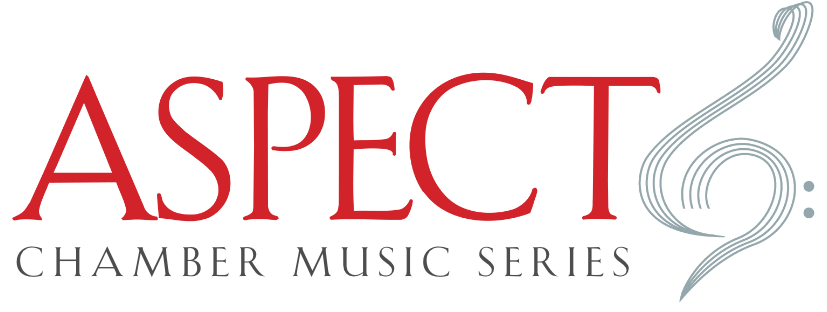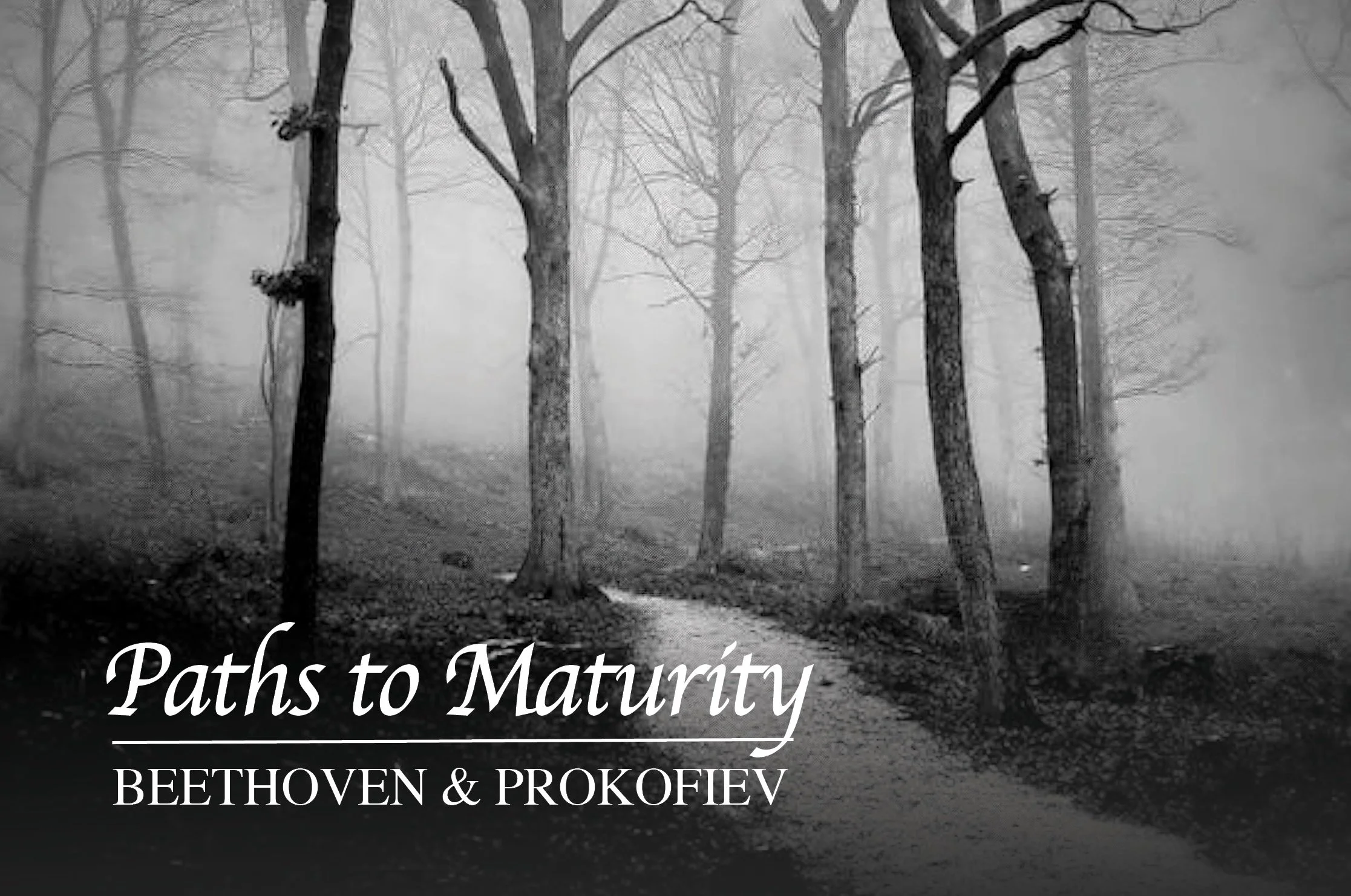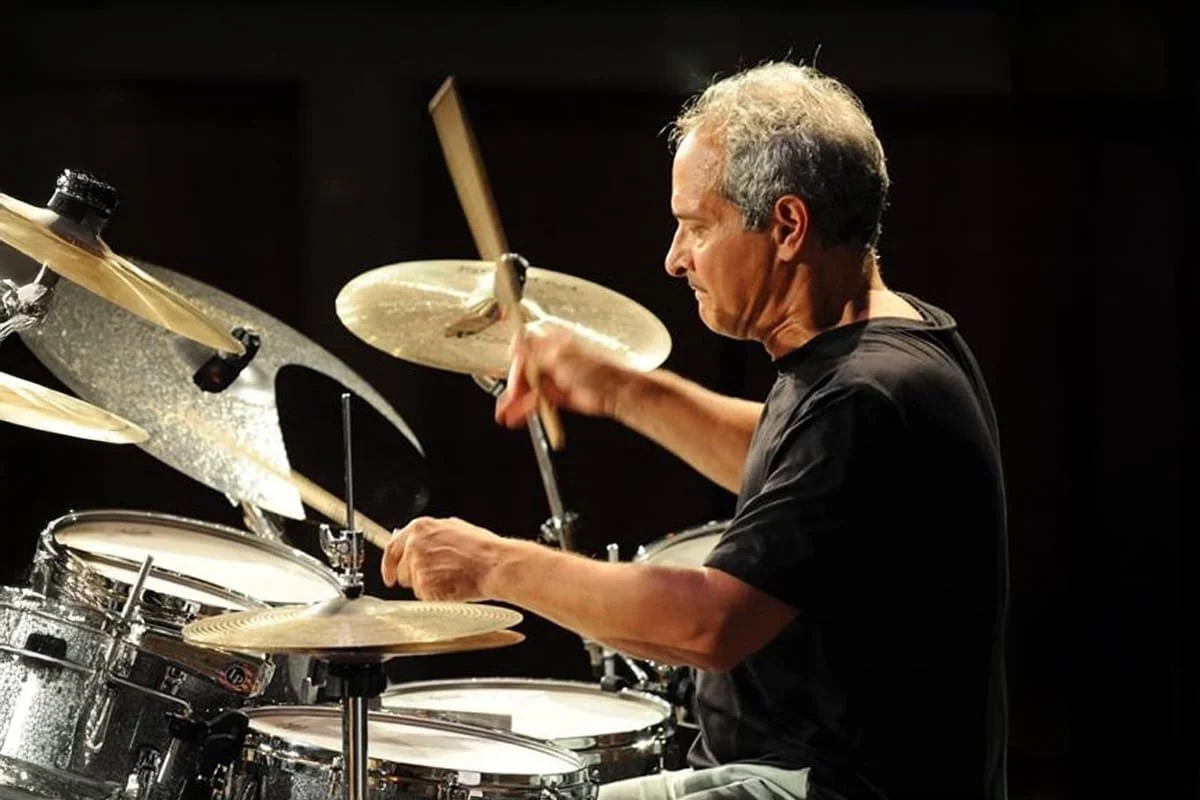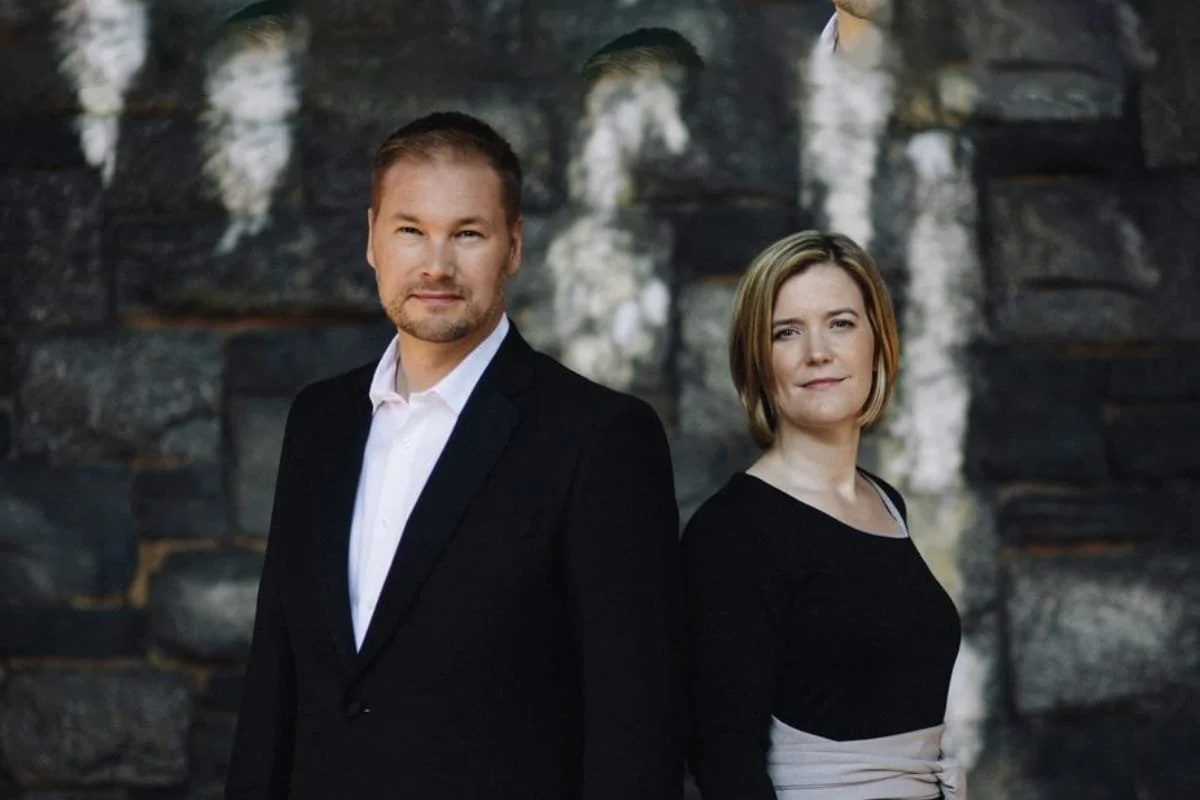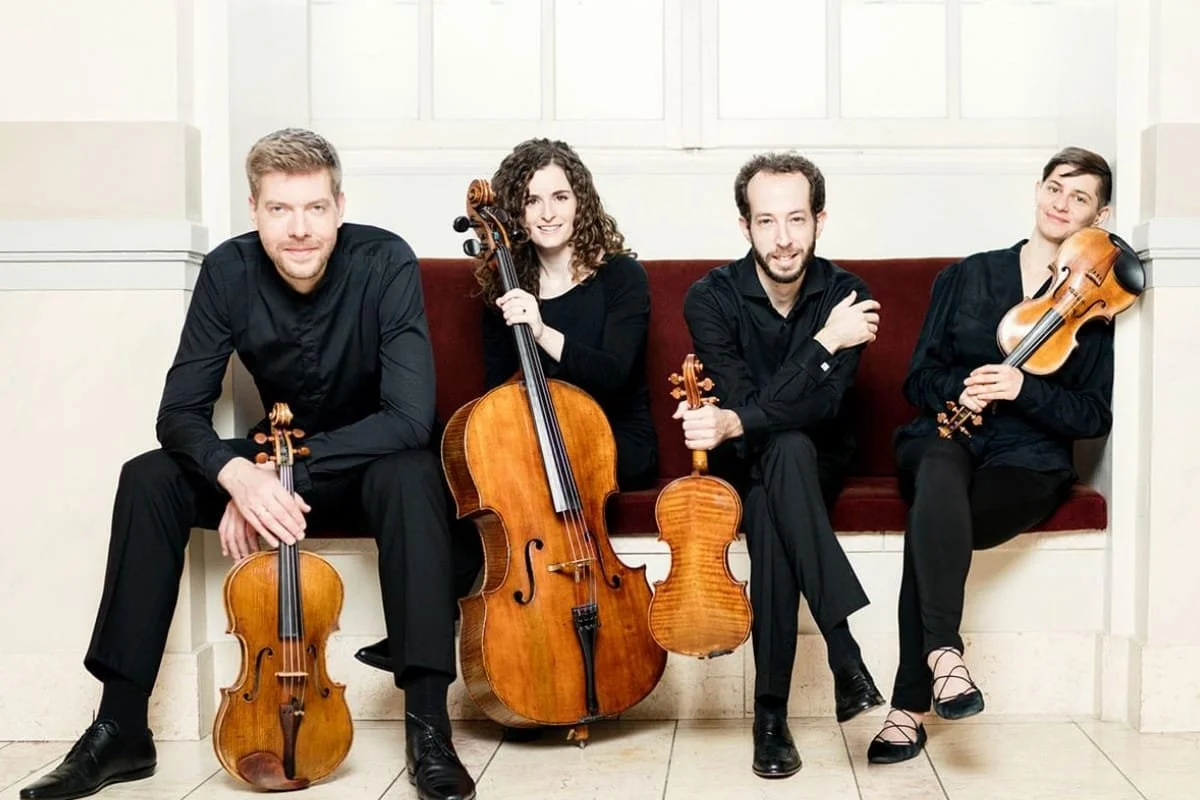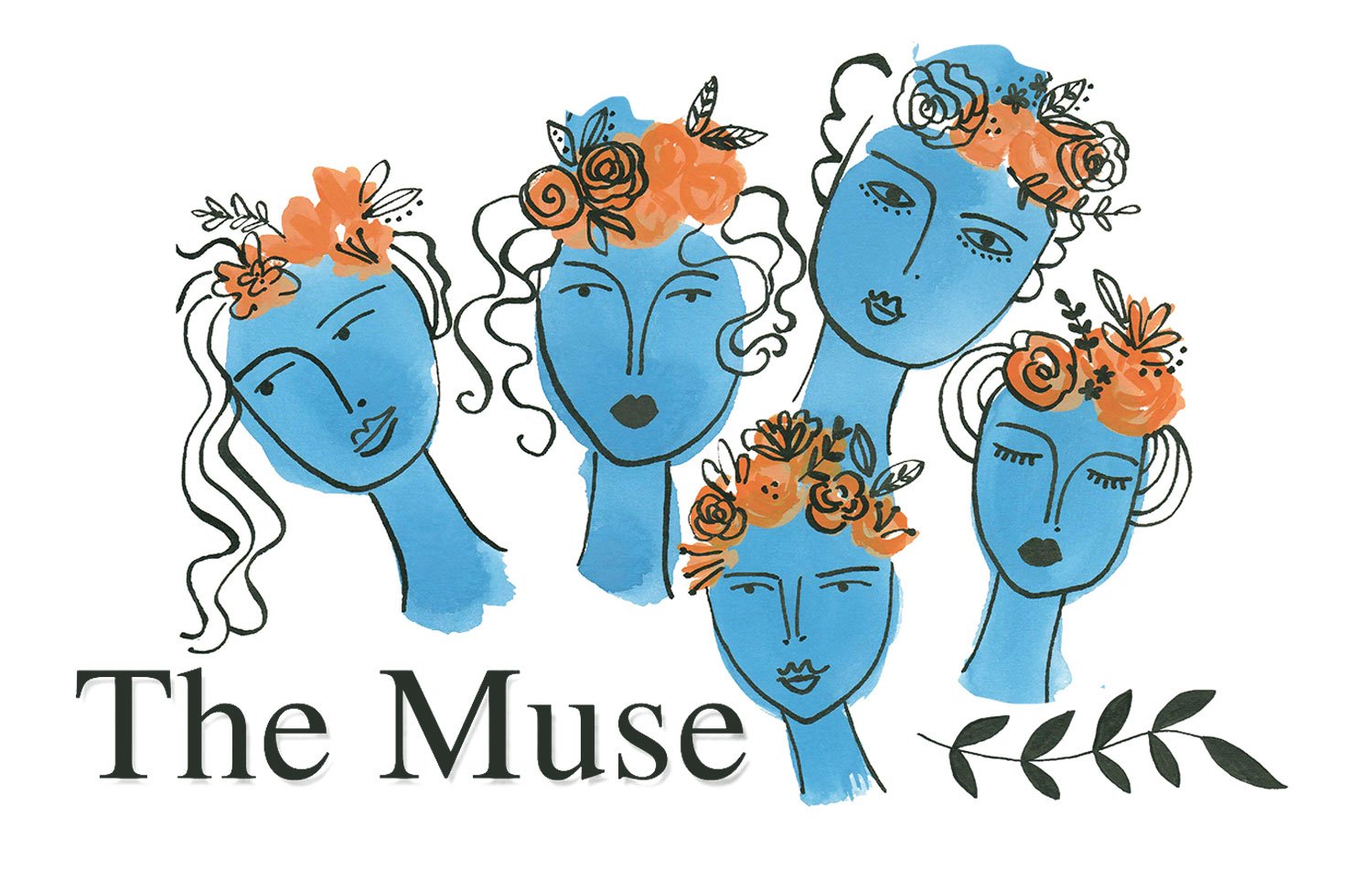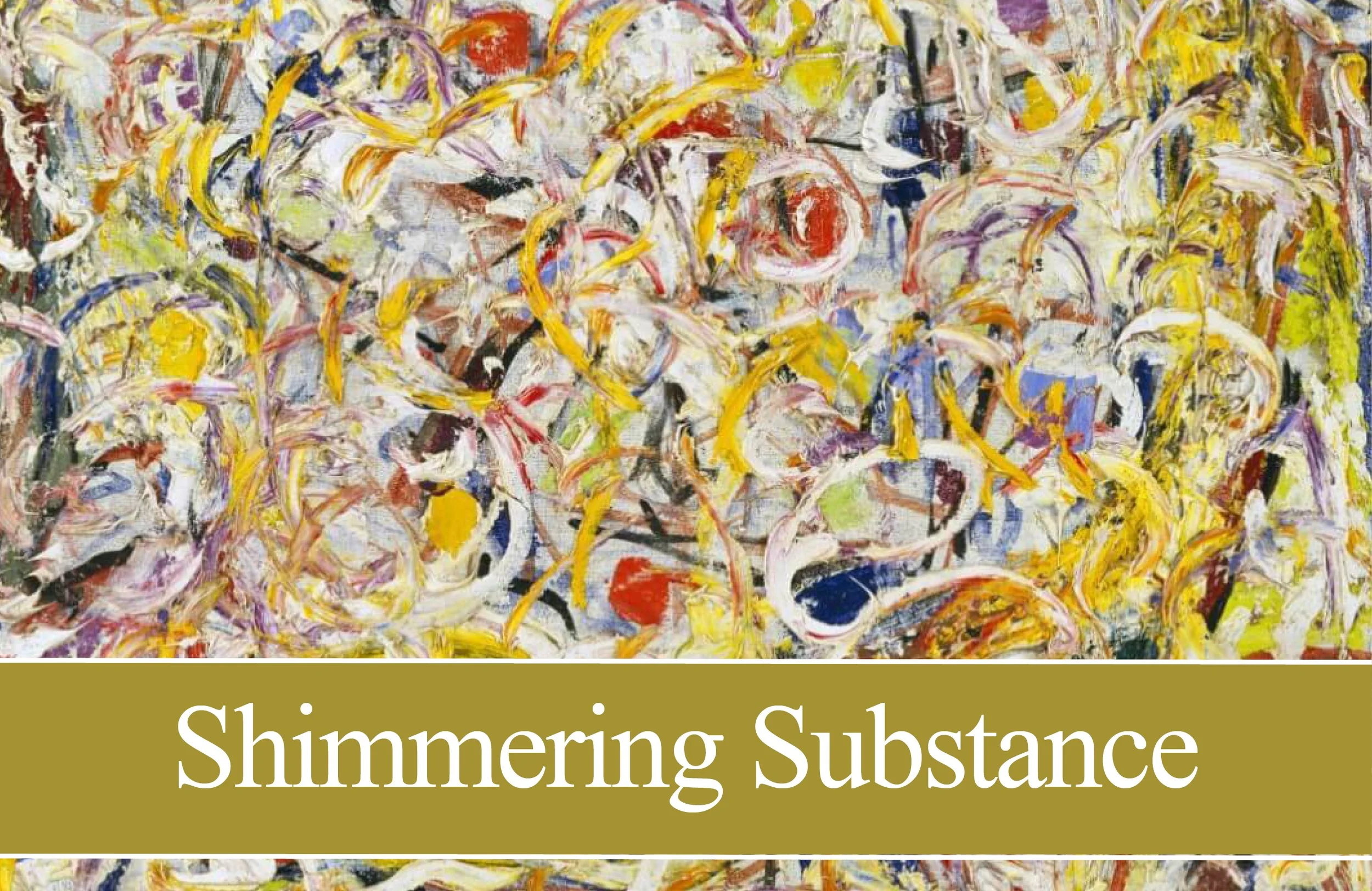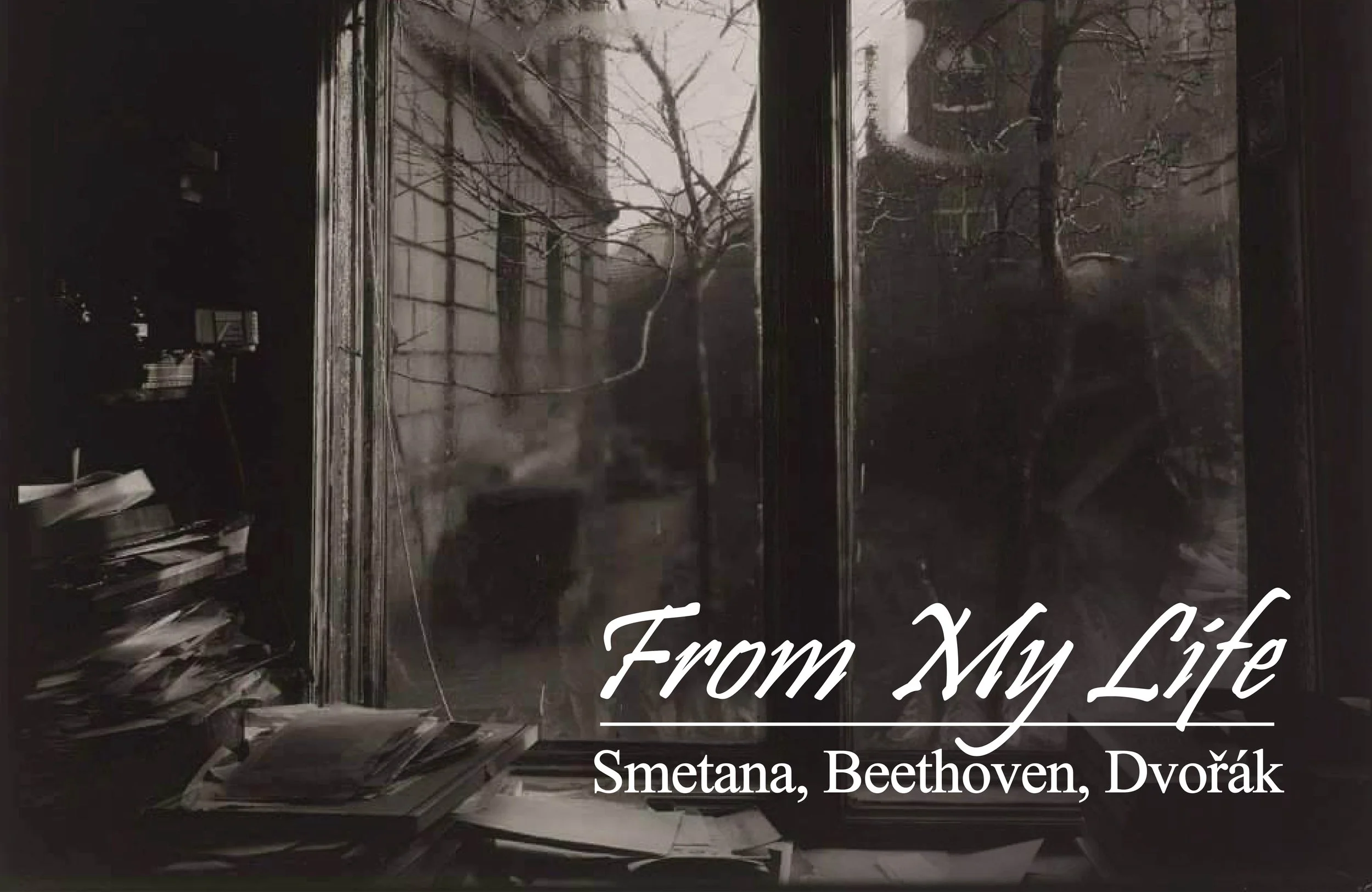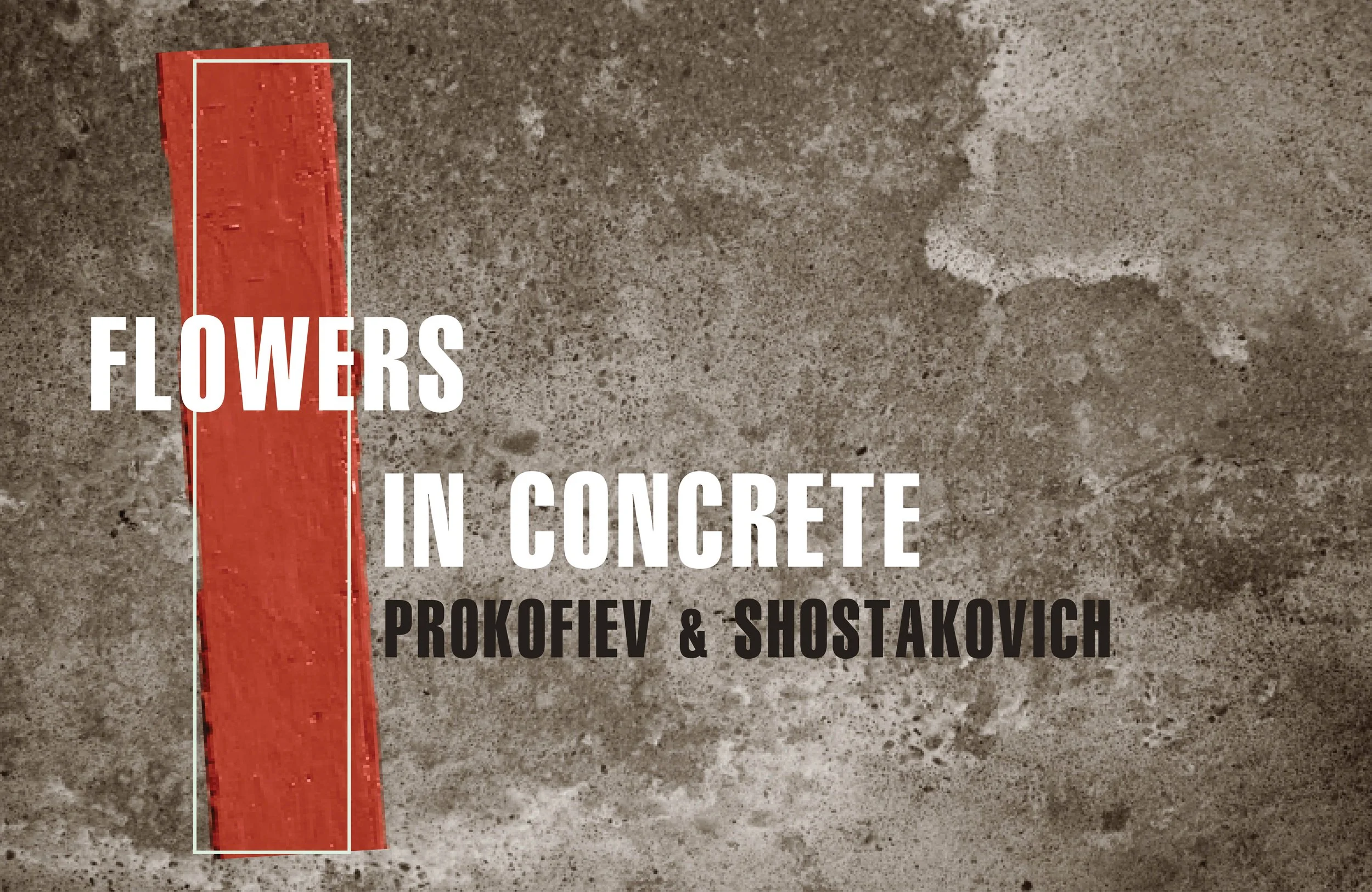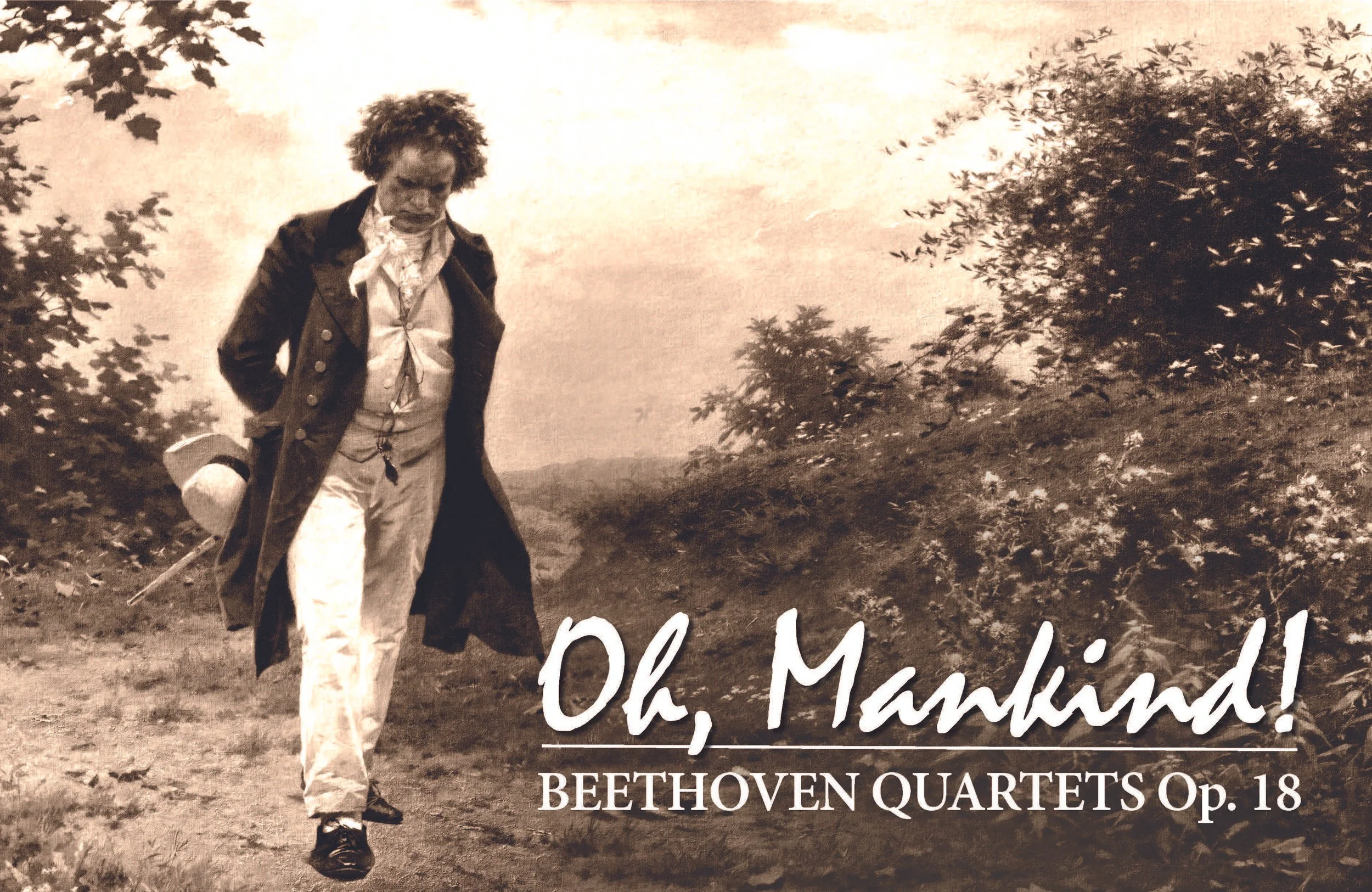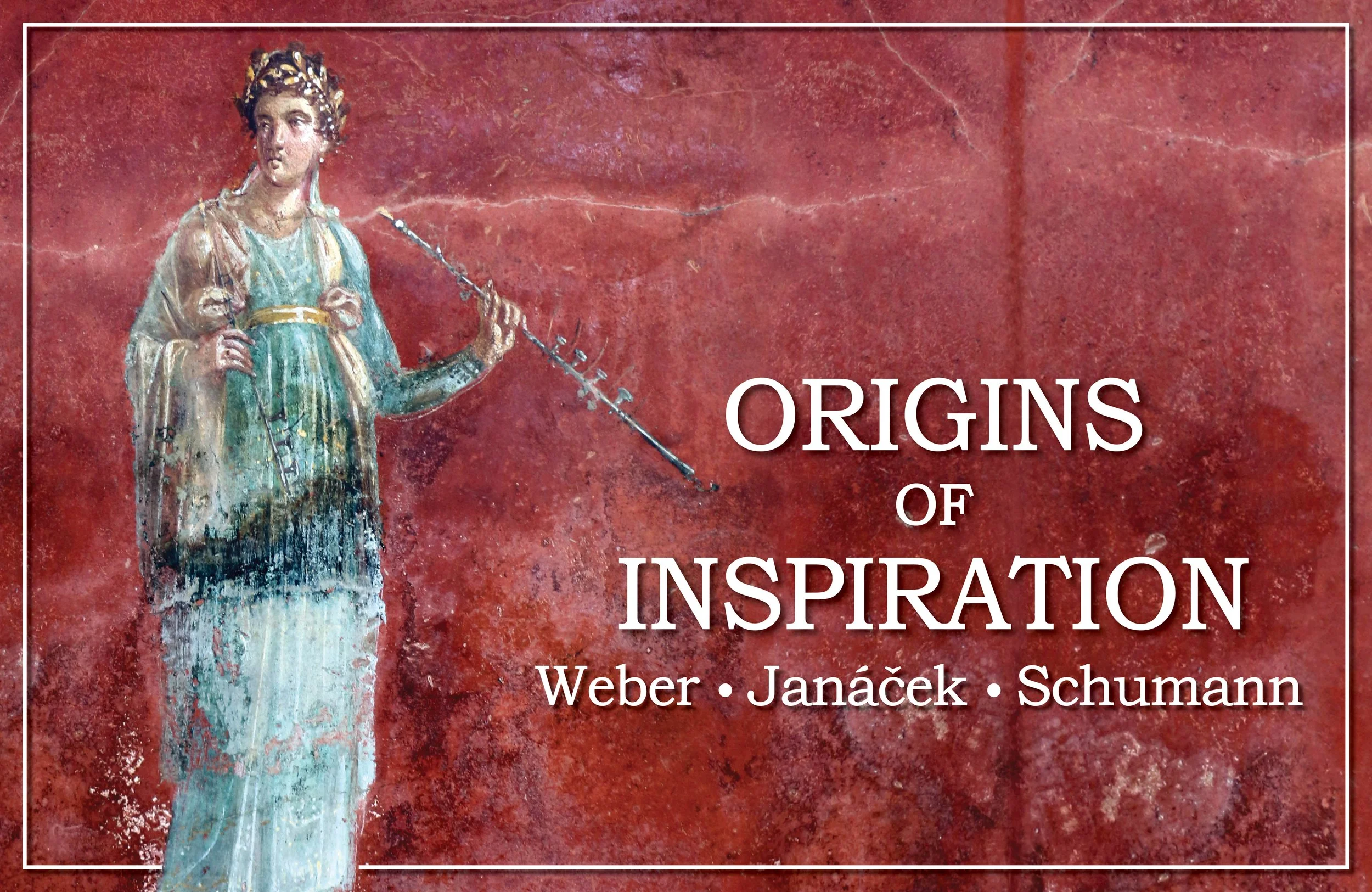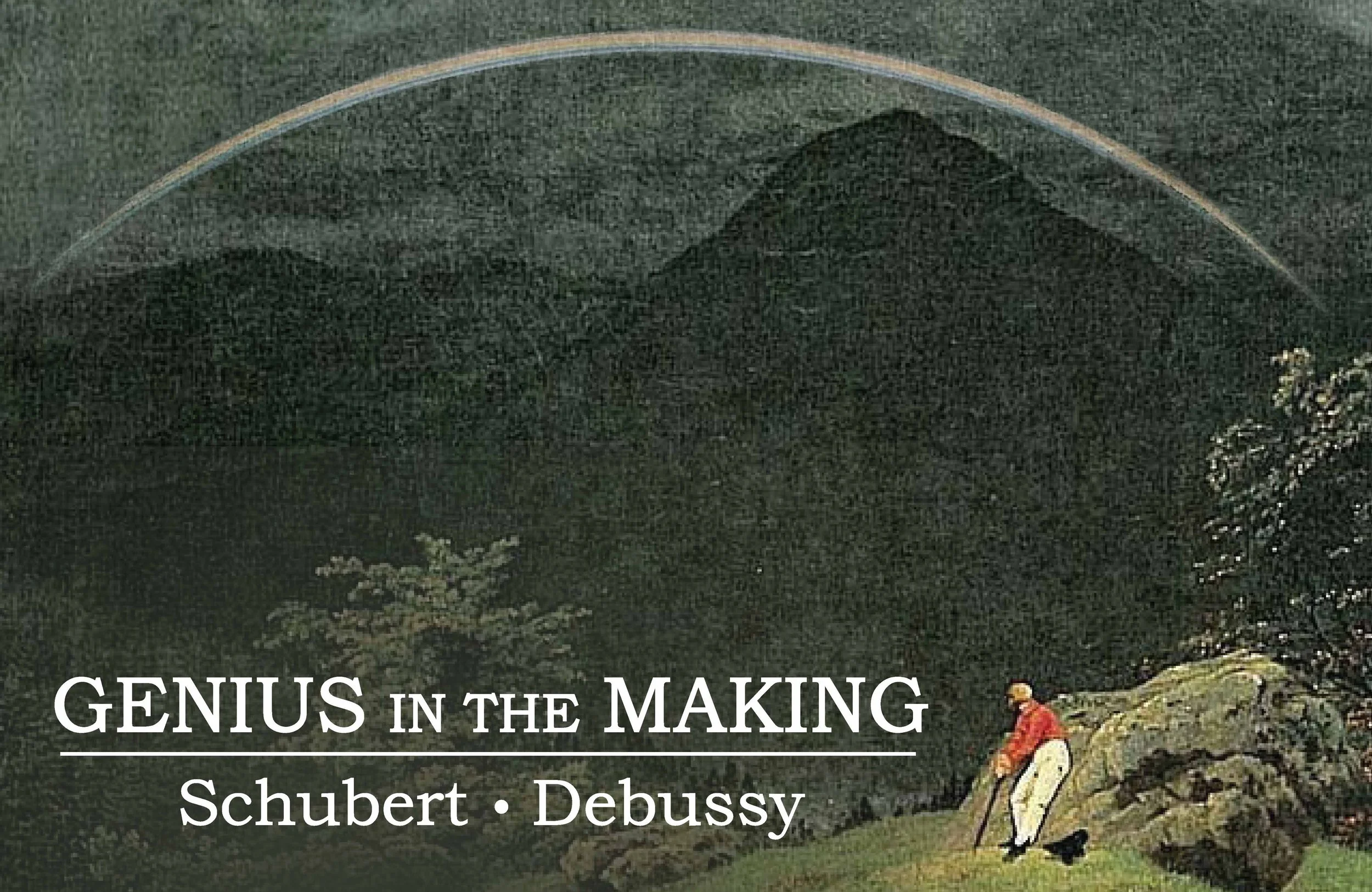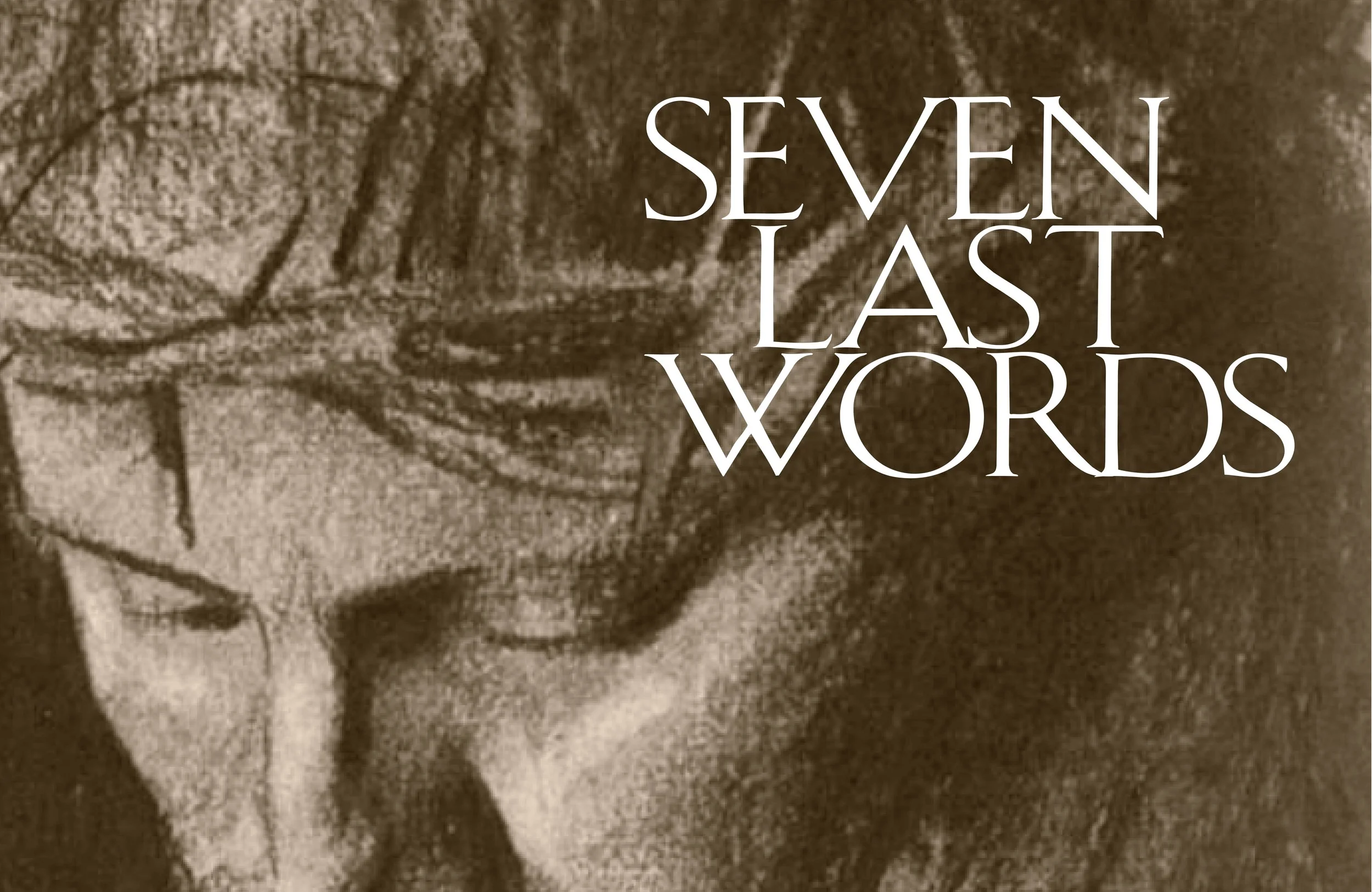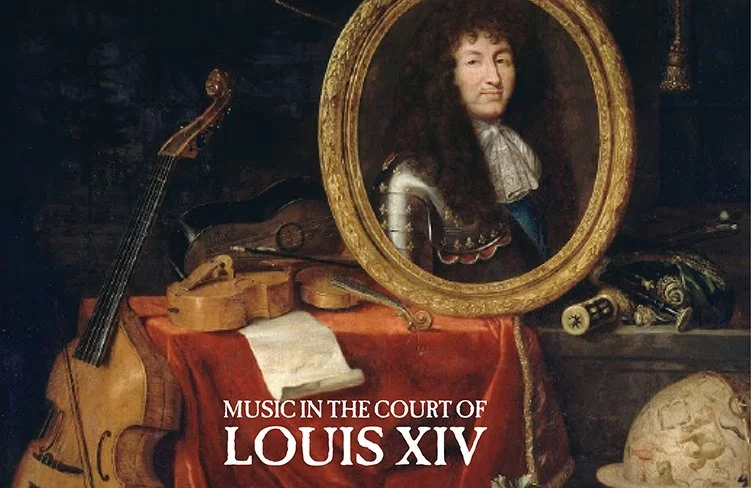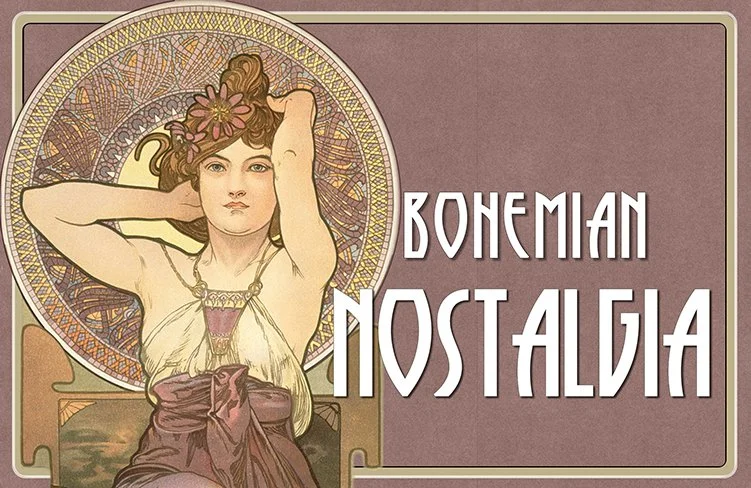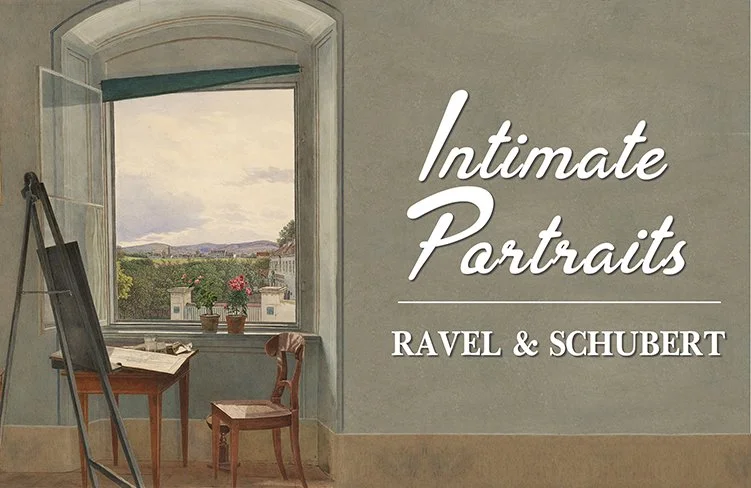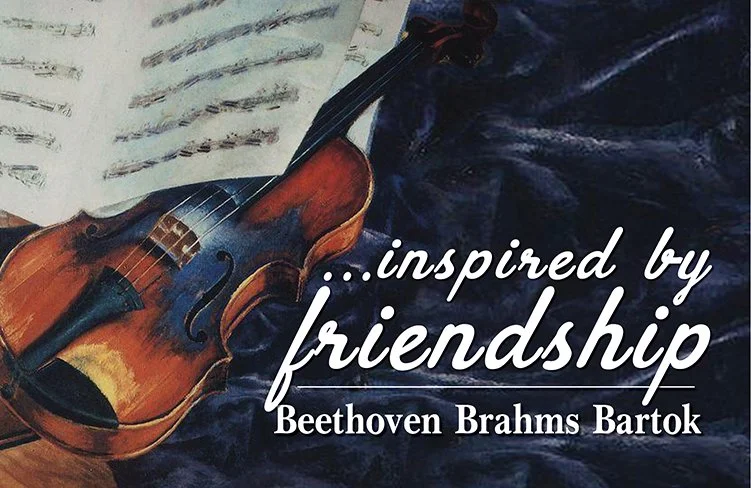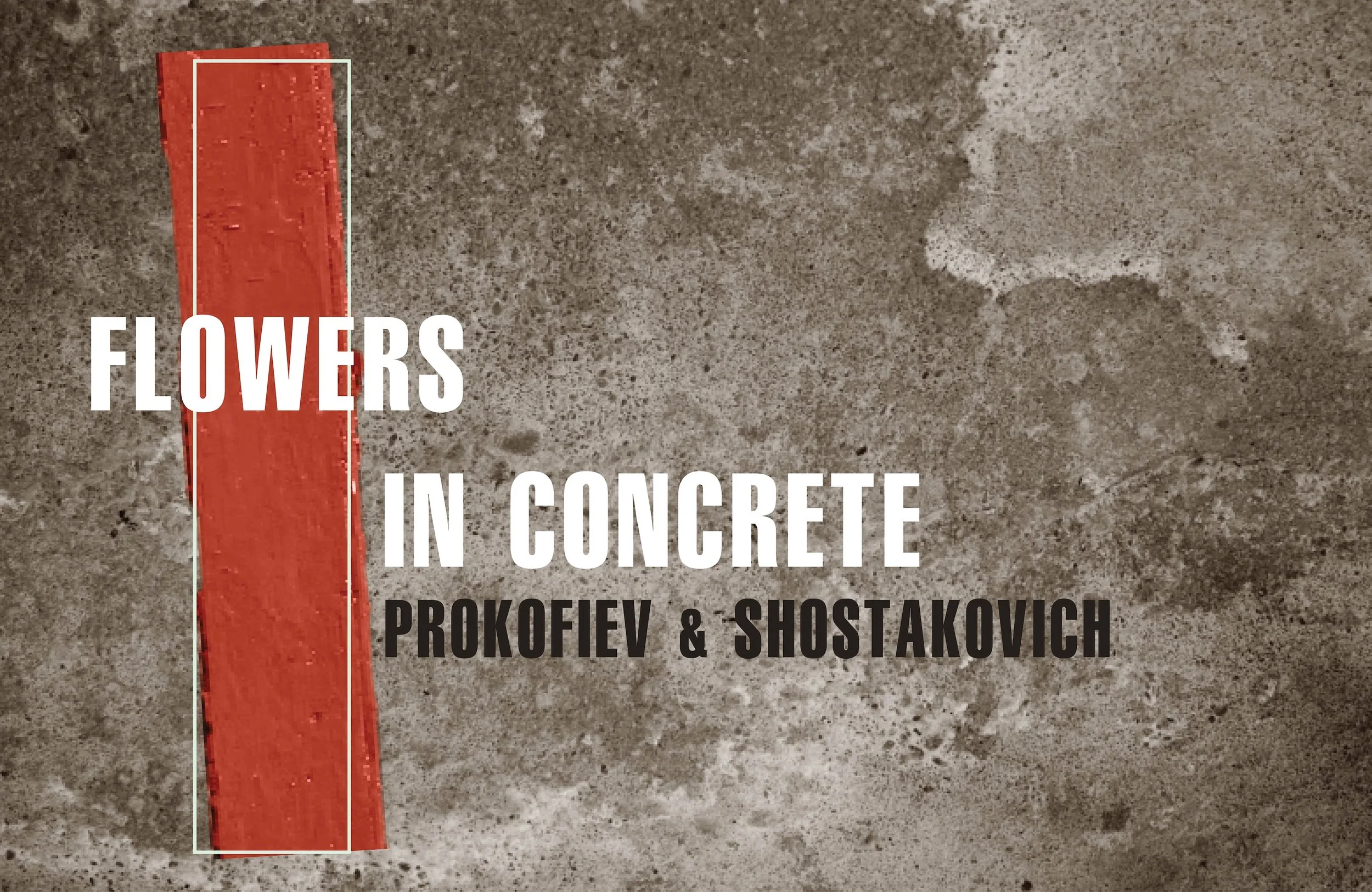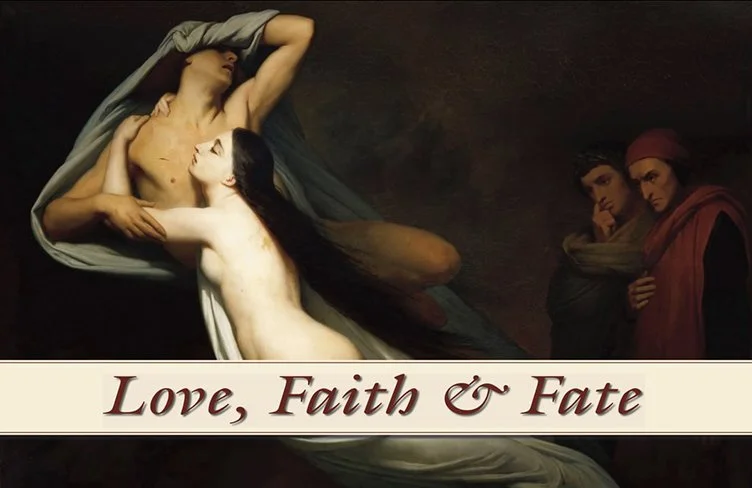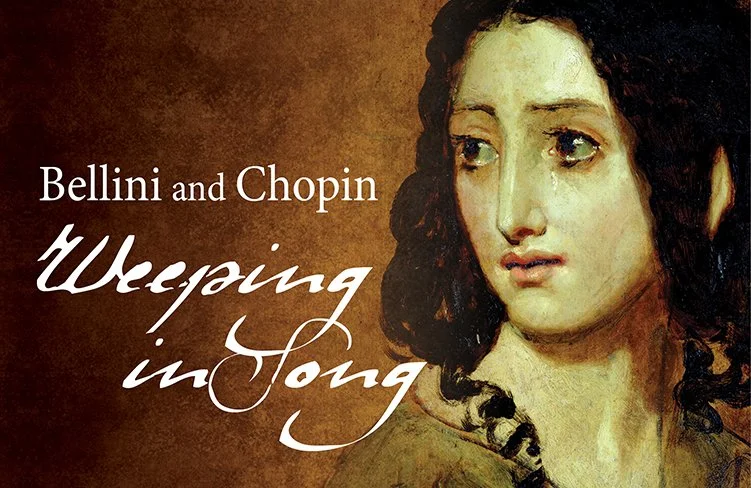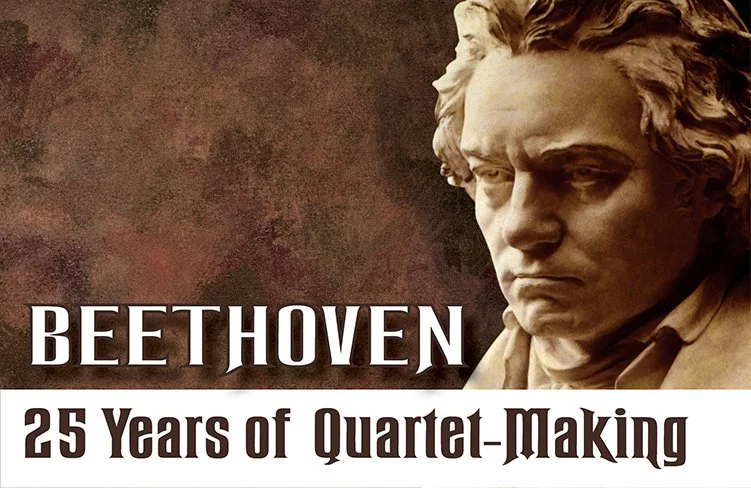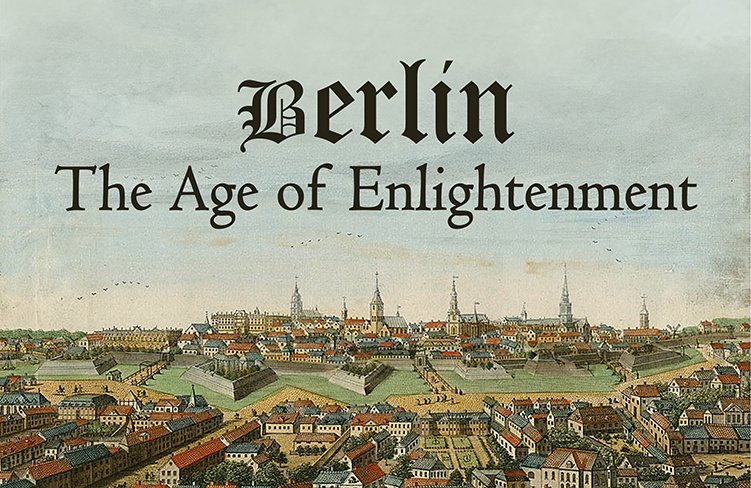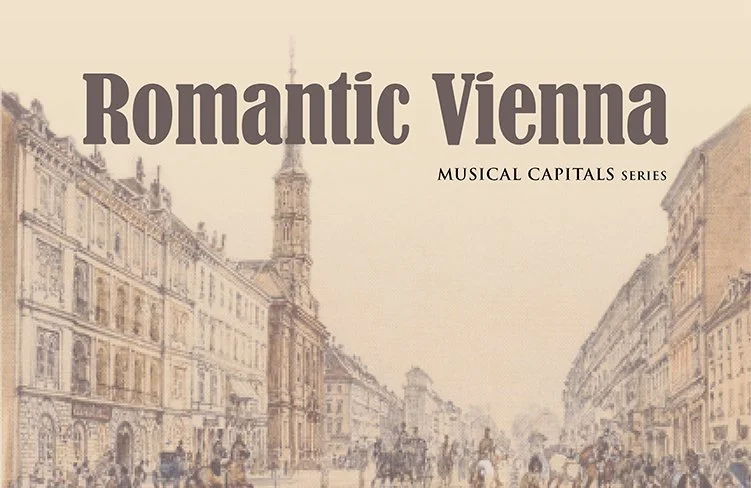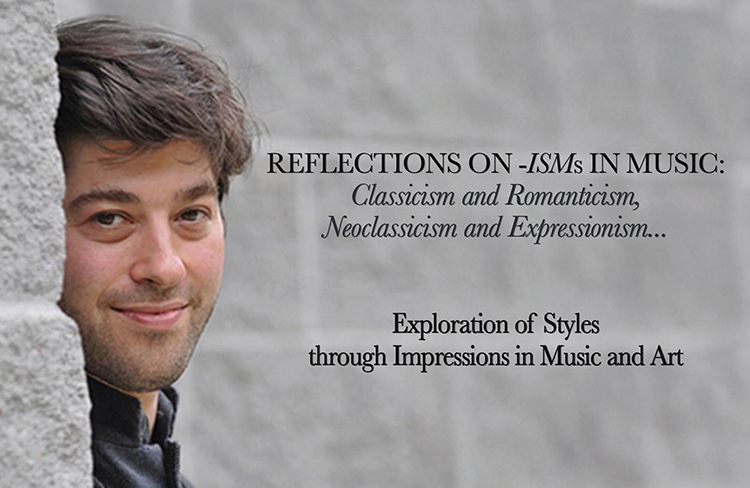2025
-
![]()
THE LARK & THE MAIDEN
October 8, 2025
Haydn String Quartet in D major, Op. 64 No. 5 “The Lark”
Schubert String Quartet No. 14 in D minor, D.810 “Death and the Maiden”Illustrated talk by Stephen Johnson
-
![]()
PATHS TO MATURITY
May 1, 2025
Leonard Elschenbroich cello
Alexei Grynyuk piano
Illustrated talk by Stephen Johnson
Beethoven Sonata No. 1 in F major, Op. 5, No. 1
Beethoven Sonata No. 5 in D major, Op. 102, No. 2
Prokofiev March from “The Love for Three Oranges”
Prokofiev Cello Sonata in C major, Op. 119 -
![]()
THE GHOSTS OF HAMLET
March 13, 2025
Le Concert de l'Hostel Dieu
Roberta Mameli soprano
Illustrated talk by John Brewer
Arias and Sinfonias, extract from: Ambleto, Francesco Gasparini, Venise 1705; Ambleto, Domenico Scarlatti, Rome 1715; Ambleto, Giuseppe Vignati, Milan 1719; Ambleto, Giuseppe Carcani, Venise 1742; Libretto from Zeno and Pariati -
![]()
SACRED AND PROFANE
February 27, 2025Quatuor Van Kuijk
Parker Ramsayharp
Illustrated talk by Parker Ramsay
Debussy String Quartet in G minor, Op. 10
Debussy La Fille aux cheveux de lin
Debussy Danse sacrée et Danse profane
Fauré Une châtelaine en sa tour…, Op. 110
Fauré Four Mélodies
Caplet Conte Fantastique (after Poe) for String Quartet & Harp
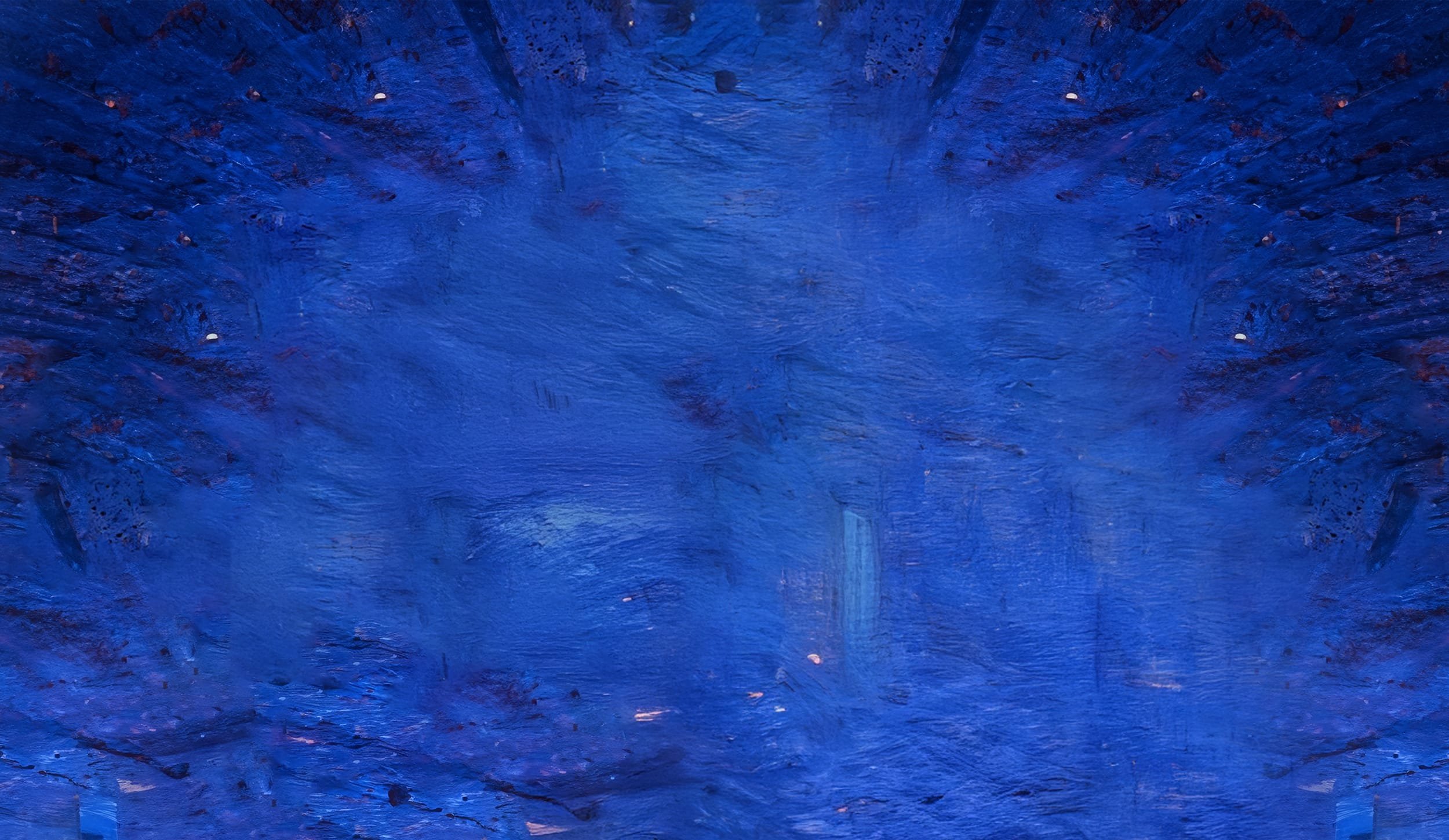
JANUARY 14 - FEBRUARY 14

2025

-
![]()
THE SPECTACLE OF SOLITUDE
January 15, 2025
Stella Chen violin
Sergey Antonov cello
Gilles Vonsattel piano
Narrated by Clement Joseph
Ravel Piano Trio in A minorDebussy Images, Book II
-
![]()
JAZZ ASPECT:
FROM NEW ORLEANS TO NEW YORK
January 17, 2025
Jen Hodge and the Band:
Jen Hodge bass, vocals & bandleader
Dennis Lichtman clarinet
Mike Davis trumpet
Sam Chess trombone
Brennen Ernst guitar
Jon Thomas piano
Kevin Dorn drums -
![]()
CO-MOTION IN COLOR AND JAZZ
January 22, 2025Painting exhibition by Alexander Kalnitsky & Ilya Mazel
Robby Ameen Jazz Trio:Robby Ameen drums
Edsel Gomez piano
Luques Curtis bass
-
![]()
TO THE DISTANT BELOVED…
January 23, 2025
Tyler Duncan baritone
Erika Switzer pianoBeethoven "An die ferne Geliebte", Op. 98 | Clara Schumann’s Romantic Songs: Including "Liebst du um Schönheit" and "Liebeszauber" | Robert Schumann "Mondnacht" from Liederkreis, Op. 39 and “Fantasie”, Op. 17 | Modern Reflections with Jeffrey Ryan:” Everything Already Lost”, featuring poetry of Jan Zwicky | Jazz Inspirations by Bill Evans
-
![]()
GREAT ARTISTS ON LOVE
January 28, 2025
Ulrich Baer author, editor, professor, podcaster
Talk, Wine Tasting & Hors d'Oeuvres -
![]()
FROM SEPHARDIC TRADITION
TO SCHUBERT’S ‘DEATH AND THE MAIDEN’
January 30, 2025Matan Porat 4 Ladino Songs
Schubert String Quartet No. 14 in D minor, D 810, Death and the Maiden -
![]()
LIFE CAST IN MUSIC
February 4, 2025
Zsolt Bognár piano
Andrea Cicalese violinIllustrated talk by Jan Swafford
Beethoven Violin Sonata No. 1 in D major, Op. 12, No. 1
Mozart Violin Sonata in E minor, K. 304
Franck Sonata for Violin and Piano in A major -
![]()
TALE OF TWO CITIES
VIENNA & PARIS
February 7, 2025
Rebecca Ringle Kamarei mezzo-soprano
Bryan Wagorn piano
Illustrated talk by Irina Knaster
Songs from Beethoven, Schubert, and Brahms -
![]()
MIKHAIL VOSKRESENSKY SOLO PIANO RECITAL
February 12, 2025
Mikhail Voskresensky piano
Beethoven Sonata in G Major, Op. 79
Mozart Fantasy in C Minor, K. 396
Grieg Piano Sonata, Op. 7Tchaikovsky:
‘From The Seasons’:
Autumn Song (October)
Troika (November)
Chopin Sonata in B Minor, Op. 58 -
![]()
TANGO UNLEASHED
February 14, 2025
Pedro Giraudo Tango Quartet
Music, Tango Lesson, Dance, Cocktails, & Buffet
2024
-
![]()
THE MUSE
November 20, 2024
Philippe Quint violin
Jun Cho piano
Jazmine Saunders soprano
Narration by Mickey Sumner
Music by Ethel Smyth, Clara Schumann, Nadia Boulanger, Lera Auerbach, Vivian Fung, Errollyn Wallen and Lora Kvint -
![]()
SHIMMERING SUBSTANCE
October 30, 2024
Quartetto di Cremona
Illustrated talk by Stephen Johnson
Schumann Quartet in A minor, Op. 41 No. 1
Ravel String Quartet in F major, M.35 -
![]()
MOZART AS HARLEQUIN
May 1, 2024
Michael Stephen Brown piano
Adam Golka piano
Illustrated talk by Jan Swafford
Music by Mozart -
![]()
ALLA ZINGARESE
April 11, 2024
Per Tengstrand piano
Hana Mundiya violin
Katie Liu viola
Robin Park cello
Illustrated talk by Per Tengstrand
Liszt Piano Sonata in B minor
Brahms Piano Quartet No.1 in G minor, Op. 25 -
![]()
FROM MY LIFE
March 14, 2024
Alexander Sitkovetsky violin
Nicholas Canellakis cello
Wu Qian piano
Illustrated talk by Nicholas Chong
Dvořák Sonatina in G major for violin and piano, Op. 100 B. 183
Beethoven Violin Sonata No. 7 ,Op. 30 No. 2
Smetana Piano Trio in G Minor, Op.15 -
![]()
LOVE'S SICKNESS
February 8, 2024
A Golden Wire Ensemble
Nola Richardson soprano
Kevin Payne lute
Illustrated talk by Parker Ramsay
Music by Purcell, Hume, Lanier, Corkine, Jenkins, Corbetta, Marais, D'Urfey, Blow, Eccles, Lawes
2023
-
![]()
FLOWERS IN CONCRETE
December 6, 2023
Marc-Andre Hamelin piano
Philippe Quint violin
Sergey Antonov cello
Illustrated talk by Irina Knaster
Prokofiev Sarcasms, Op. 17 (solo piano)
Prokofiev Violin Sonata No. 2 in D major, Op. 94bis
Shostakovich Piano Trio No. 2 in E minor, Op. 67 -
![]()
OH, MANKIND!
November 16, 2023
Ariel Quartet
Illustrated talk by Jan Swafford
Beethoven curated selections from Op. 18/1–5
Beethoven String Quartet No. 6 in B flat major, Op. 18 No. 6 -
![]()
ORIGINS OF INSPIRATION
October 26, 2023
Zemlinsky Quartet
Alexander Bedenko clarinet
Illustrated talk by Stephen Johnson
Janáček String Quartet No. 1, ‘Kreutzer Sonata’
Weber Clarinet Quintet in B flat major, Op. 34
Schumann String Quartet in A minor, Op. 41 No. 1 -
![]()
GENIUS IN THE MAKING
October 6, 2023
Quatuor Danel
Illustrated talk by Misha Donat
Schubert String Quartet No. 10 in E flat major, D87
Schubert Quartettsatz in C minor, D703
Debussy String Quartet in G minor, Op. 10 (L91) -
![]()
DEAR FATHER...
May 18, 2023Stella Chen violin
Brannon Cho cello
Matthew Lipman viola
Illustrated talk by Irina Knaster
Paganini Caprice No. 24 in A minor
Beethoven String Trio in G major, Op. 9 No. 1
Mozart Divertimento for String Trio
-
![]()
-
![]()
AGAINST THE TIDE
April 13, 2023
Leonard Elschenbroich cello
Alexei Grynyuk piano
Illustrated talk by Nicholas ChongRachmaninoff Sonata in G minor for Cello and Piano, Op. 19
Franck Sonata in A major for Violin and Piano -
![]()
SPANISH IMPRESSIONS
March 16, 2023
Illustrated talk by Stephen Buck
Turina Piano Trio No. 2 in B minor, Op. 76Arbos Three Spanish Dances, Op. 1
Perelló Tres impresiones (1922)
Cassadó Piano Trio (1926)
-
![]()
FOR THE LOVE OF CLARA: SCHUMANN & BRAHMS
February 9, 2023
Grace Park violin
Brook Speltz cello
Adam Golka piano
Illustrated talk by Jan Swafford
C. Schumann Romanze (arrangement of the slow movement from the Piano Concerto)R. Schumann Fantasiestücke, Op. 73
R. Schumann Violin Sonata No. 3 in A minor
Brahms Piano Trio No. 1 in B major
2022
-
![]()
CROSSING PARALLELS: TCHAIKOVSKY & DVOŘÁK
December 7, 2022
Philippe Quint violinStephanie Zyzak violin
Maurycy Banaszek viola
Paul Laraia viola
Zlatomir Fung cello
Adrian Daurov cello
Illustrated talk by Irina Knaster
Dvořák String Sextet in A major, Op. 48Tchaikovsky String Sextet in D minor "Souvenir de Florence", Op. 70
-
![]()
LOVE AND LOSS: BRAHMS & MENDELSSOHN
November 3, 2022
Illustrated talk by Per Tengstrand
Brahms String Quartet in C minor, Op. 51 No. 1Mendelssohn String Quartet in F minor, Op. 80
-
![]()
MUSIC IN THE COURT OF LOUIS XIV
October 6, 2022
Nola Richardson sopranoParker Ramsay harp
Kevin Payne lute
Arnie Tanimoto viola da gamba
Illustrated talk by John Brewer
Music by Francesco Corbetta, Jean-Baptiste Lully, Louis Couperin, Marin Marais, Louis-Nicolas Clérambault -
![]()
ALMA MAHLER: MUSE OR MONSTER
May 18, 2022
Rebecca Ringle Kamarei mezzo-sopranoBryan Wagorn piano
Brook Speltz cello
Adam Barnett-Hart violin
Adam Golka piano
Illustrated talk by Nicholas Chong
Songs by Alma and Gustav Mahler
Zemlinsky Three Pieces for cello and piano
Korngold Piano Trio, Op. 1
-
![]()
MUSIC OF THE PLEASURE GARDENS
April 28, 2022
Illustrated talk by John Brewer
Handel Sonata for violin and continuo in D major
‘Sweet bird’ (L’Allegro)
‘Waft her, Angels’ (Jeptha)
Chilcot Orpheus with his Lute
J.C. Bach Quartet in C major for flute, violin, viola and cello, Op. 8 No. 1
Haydn Three Scot Songs -
![]()
CHARLIE CHAPLIN’S SMILE
April 20, 2022
Philippe Quint violinJun Cho piano
Presentation by Philippe Quint
Music by Chaplin, Brahms, Debussy, Stravinsky, and Gershwin -
![]()
BOHEMIAN NOSTALGIA
April 6, 2022
Grace Park violinZlatomir Fung cello
Gilles Vonsattel piano
Illustrated talk by Nicholas Chong
Smetana Piano Trio, Op. 15Dvořák Piano Trio, No.3 Op. 65
-
![]()
BEETHOVEN VARIATIONS
March 31, 2022
Ruth Padel ‘Beethoven Variations: Poems on a Life’
Poetry reading by the author
Beethoven String Quartet in F major, Op. 18, No. 1Beethoven String Quartet No. 15 in A minor, Op. 132
-
![]()
INTIMATE PORTRAITS: RAVEL & SCHUBERT
February 3, 2022
Illustrated Talk by Nicholas Chong
Schubert Piano Trio in B flat major, D898Ravel Piano Trio in A minor
2021
-
![]()
WINTERREISE. WINTER JOURNEY
December 13, 2021
Tyler Duncan baritoneErika Switzer piano
Illustrated talk by Christopher Gibbs
Schubert Winterreise -
![]()
SONGS OF SOLACE
November 18, 2021
Alexander Bedenko clarinet
Illustrated talk by Stephen Johnson
Shostakovich String Quartet No. 4Johnson Angel’s Arc, for clarinet and string quartet
Brahms Clarinet Quintet
-
![]()
ASTOR PIAZZOLLA CENTENNIAL: BETWEEN ANGELS & DEMONS
October 28, 2021
Philippe Quint violinRodolfo Zanetti bandoneón
Pedro Giraudo bass
Ahmed Alom piano
Federico Díaz guitar
Sofía Tosello vocalist
Narration by Philippe Quint
Music by Astor Piazzolla -
![]()
INSPIRED BY FRIENDSHIP
October 7, 2021
Kristóf Baráti violinRoman Rabinovich piano
Illustrated talk by Michael Parloff
Brahms Violin Sonata No. 2 in A major, Op. 100 ‘Thun’Bartók Violin Rhapsody No. 1
Beethoven Violin Sonata No. 9 in A major, Op. 47 ‘Kreutzer’
2020
-
![]()
MUSIC, TALES & MAGIC
March 11, 2020
Narek Hakhnazaryan cello
Noreen Polera piano
Illustrated talk by John Brewer
Beethoven Seven Variations on a theme from Mozart’s ‘The Magic Flute’
Grieg Solveig’s Song
Chopin Polonaise brillante in C major, Op. 3
Fauré Apres un rêve
Popper Dance of the Elves
Grieg Cello Sonata -
![]()
FRENCH IMPRESSIONS
February 27, 2020
Grace Park violin
Gilles Vonsattel piano
Calidore String Quartet
Illustrated talk by Samuel Adams
Debussy Violin Sonata in G minor
Chausson Concerto for Violin, Piano and String Quartet, Op. 21
2019
-
![]()
RUSSIAN ELEGY
December 4, 2019
Misha Keylin violin
Zlatomir Fung cello
Pavel Nersessian piano
Illustrated talk by Stephen Johnson
Lyadov Three Pieces, Op. 57
Glinka Trio Pathétique
Tchaikovsky Piano Trio in A minor, Op. 50 -
![]()
HAUNTED MINDS
November 13, 2019
Ariel Quartet
Illustrated talk by Nicholas Chong
Bartók String Quartet No. 1Shostakovich String Quartet No. 8
-
![]()
FLOWERS IN CONCRETE
October 29, 2019
Philippe Quint violin
Leonard Elschenbroich cello
José Gallardo piano
Illustrated talk by Stephen Johnson
Schnittke Suite in Old Style for violin and piano
Prokofiev Sonata No.2 in D major, Op.94a
Shostakovich Trio No.2 in E Minor -
![]()
SCHUBERT QUINTET
October 23, 2019
Formosa Quartet
Peter Wiley cello
Illustrated talk by Misha Donat
Schubert String Quintet in C major, D956 -
![]()
MUSIC OF THE 18TH CENTURY GRAND TOUR
May 30, 2019
Pascale Beaudin soprano
The Four Nations Ensemble
Illustrated talk by John Brewer
Music by
Jean-Baptiste Quentin, Johann Adolf Hasse, Antonio Vivaldi, Arcangelo Corelli, Battista Pergolesi -
![]()
ARCHDUKE RUDOLPH: BEETHOVEN’S PUPIL AND PATRON
April 17, 2019
Ignat Solzhenitsyn piano
Korbinian Altenberger violin
Nayoung Baek cello
Illustrated talk by Ignat Solzhenitsyn
Beethoven Violin Sonata No. 10 in G major, Op. 96
Beethoven Piano Trio in B-flat major, Op. 97 ‘Archduke’ -
![]()
LOVE, FAITH & FATE
March 19, 2019
John Pumphrey tenor
William Fu piano
Illustrated talk by Stephen Johnson
Music by Strauss, Rachmaninoff, Franck, Wagner and Verdi -
![]()
WHEN TCHAIKOVSKY MET BRAHMS…
March 6, 2019
Alexander Sitkovetsky violin
Wu Qian piano
Illustrated talk by Nicholas Chong
Tchaikovsky Souvenir d’un lieu cher, Op. 42
Brahms Violin Sonata No. 2 in A major, Op. 100
Grieg Sonata No. 3 in C minor, Op. 45 -
![]()
CLASSICAL VIENNA
January 23, 2019
Orion String Quartet
Alexander Bedenko clarinet
Illustrated talk by Elliott Forrest
Haydn String Quartet in C major, Op. 50 No. 2
Mozart Clarinet Quintet in A major, K. 581
2018
-
![]()
MOZART, SCHUMANN & THE TALES OF HOFFMANN
December 5, 2018
Philippe Quint violin
Grace Park violin
Matthew Lipman viola
Kyle Armbrust viola
Zlatomir Fung cello
Vsevolod Dvorkin piano
Illustrated talk by Damian Fowler
Mozart String Quintet No. 4 in G minor, K516
Schumann Piano Quintet in E flat major, Op. 44 -
![]()
BEETHOVEN: INTIMATE LETTERS
November 1, 2018
Ariel Quartet
Illustrated talk by Ariel Quartet
Beethoven String Quartet, Op. 18 No. 1
Beethoven String Quartet, Op. 131 -
![]()
ZEMLINSKY, JANACEK, DVORAK & THEIR MUSES
October 16, 2018Zemlinsky Quartet
Illustrated talk by Nicholas Chong
Zemlinsky Quartet No. 1
Janáček String Quartet No. 2 “Intimate Letters”
Dvořák Love Songs -
![]()
FETE GALANTE: THE ANATOMY OF MELANCHOLY
May 17, 2018
Sherezade Panthaki soprano
Four Nations Ensemble
Illustrated talk by Tav Holmes
Leclair Second Musical Recreation
Clérambault L'Isle de Délos
Devienne Trio for flute, violin and cello in G minor
Telemann Paris Quartet No.5 in A major -
![]()
J.S. BACH. THE ART OF FUGUE
April 12, 2018
Fretwork
Illustrated talk by Richard Boothby
J.S. Bach Art of Fugue -
![]()
WEIMAR: THE CRADLE OF MUSICAL TALENT
April 19, 2018
Vsevolod Dvorkin piano
Sergey Antonov cello
Illustrated talk by Stephen Johnson
Bach Cello Suite No.1 in G major
Mendelssohn Cello Sonata No.2 in D. major
Liszt Piano Sonata in B minor
2017
-
![]()
SCHUBERT OCTET
December 14, 2017
Ying Quartet
Joseph Anderer horn
William Short bassoon
Alexander Bedenko clarinet
Brendan Kane double bassIllustrated talk by Misha Donat
Schubert Octet -
![]()
KREUTZER SONATA
November 16, 2017
Mark Steinberg violin
Ignat Solzhenitsyn piano
Ariel Quartet
Illustrated talk by Ignat Solzhenitsyn
Beethoven Violin Sonata No. 9 in A major, Op. 47 Kreutzer Sonata
Tchaikovsky String Quartet No. 1 in D major, Op. 11
Janácek String Quartet No. 1 Kreutzer Sonata -
![]()
KINDRED SPIRITS
October 26, 2017
The Endellion String Quartet
Illustrated talk by David Waterman
Haydn String Quartet in G major, Op. 54 No. 1
Beethoven String Quartet No. 12 in E flat major, Op. 127
Schubert Quartettsatz in C minor, D703 -
![]()
WINDS OF CHANGE
May 17, 2017
Benjamin Hochman piano
Joseph Anderer horn
Alexander Bedenko clarinet
William Short bassoon
Anna Urrey flute
Katherine Needleman oboeIllustrated talk by Stephen Johnson
Mozart Quintet in E flat major for piano and winds, K452
Rimsky-Korsakov Quintet in B flat major
Poulenc Sextet for piano and wind quintet, Op. 100 -
![]()
CLARA SCHUMANN: ARTIST AND MUSE
April 19, 2017
Stephanie Chase violin
Sophie Shao cello
Todd Crow piano
Illustrated talk by Nicholas Chong
R. Schumann Five Pieces in Folk Style for cello and piano, Op. 102
Brahms Sonata in G major for violin and piano, Op. 78
C. Schumann Piano Trio in G minor, Op. 17 -
![]()
PRAGUE: CZECH ROMANTICS
February 23, 2017
Arnaud Sussmann violin
Michael Stephen Brown piano
Illustrated talk by Nicholas Chong
Smetana From My Homeland, Op. 128
Suk Four Pieces for violin and piano, Op.17
Janácek Violin Sonata
Dvořák Romantic Pieces, Op. 75 -
![]()
ROMANTIC VIENNA
January 26, 2017
Arnaud Sussmann violin
Emily Daggett Smith violin
Paul Neubauer viola
Rafael Figueroa cello
Vsevolod Dvorkin piano
Illustrated talk by Stephen Johnson
Schubert Arpeggione Sonata, D821
Brahms Piano Quintet in F minor, Op. 34
2016
-
![]()
BACH AND MOZART: A LASTING LEGACY
October 5, 2016
Dmitry Sitkovetsky violin
Dov Scheindlin viola
Sergey Antonov cello
Ignat Solzhenitsyn piano
Illustrated talk by Paul Berry
Mozart Prelude and Fugue in D minor for string trio, K404a No. 1
J.S. Bach Fifteen Sinfonias, BWV 787-801 (arr. D. Sitkovetsky)
Mozart Piano Quartet in E flat major, K493
2015
-
![]()
BRITTEN AND SHOSTAKOVICH: A REMARKABLE FRIENDSHIP
June 11, 2015
Aleksei Kiseliov cello
Itamar Golan piano
Illustrated talk by Iain Burnside
Britten Cello Sonata Op. 65
Shostakovich Cello Sonata Op. 40 -
![]()
SCHUBERT: IN THE FOOTSTEPS OF BEETHOVEN
June 10, 2015
Ferenc Rados piano
Illustrated talk by Misha Donat
Beethoven Piano Sonata in A flat major Op. 26
Schubert Piano Sonata in D major D850 -
![]()
BAROQUE LONDON. MUSIC FOR COURT AND SALON
May 13, 2015
Rachel Podger director/violin
Brecon Baroque
Illustrated talk by Richard WigmoreMusic by Handel, Geminiani, Purcell, Boyce, Avison
-
![]()
WANDERERS: BYRON LISZT AND BERLIOZ
April 25, 2015
Iakov Zats viola
Vsevolod Dvorkin piano
Illustrated talk by Stephen JohnsonLiszt Années de pèlerinage Première année Suisse
Berlioz arr. Liszt Harold en Italie -
![]()
WINDS OF CHANGE
March 26, 2015
Vsevolod Dvorkin piano
Jasmine Choi flute
Alexander Bedenko clarinet
Timothy Rundle oboe
Laura Vincent bassoon
Geremia Iezzi horn
Illustrated talk by Richard Wigmore
Mozart Quintet in E flat major for piano and winds K452
Rimsky-Korsakov Quintet in B flat major
Poulenc Sextet for piano and wind quintet Op. 100 -
![]()
BELLINI AND CHOPIN: WEEPING IN SONG
March 2, 2015
Gyula Rab tenor
Aldemir Tokov piano
Thomas Harris piano
Yekaterina Lebedeva piano
Illustrated talk by Patrick Bade
Chopin Polish Songs Op. 74 Nos. 1 2 and 3
Chopin Scherzo No. 3 Nocturne Op. 27 No. 2 Ballade No. 1
Liszt Tre sonetti di Petrarca
Liszt Sonetto di Petrarca No. 104 Paraphrase on Verdi’s Rigoletto
Bellini I puritani A te o cara
Verdi Rigoletto Ella mi fu rapita Parmi veder le lagrime -
![]()
BEETHOVEN. TWENTY-FIVE YEARS OF QUARTET MAKING
February 25, 2015
The Endellion String Quartet
Poetry by Ruth Padel
Beethoven String Quartets Op. 18 No. 6 and Op. 131 -
![]()
BERLIN: THE AGE OF ENLIGHTENMENT
January 24, 2015
Rachel Brown flute
Madeleine Easton violin
Richard Boothby viola da gamba
Mahan Esfahani harpsichord
Illustrated talk by Norman Lebrecht
C. P. E. Bach Sonata in D major for viola da gamba and harpsichord Wq. 88
Benda Sonata XI in D major for violin and basso continuo
Quantz Trio Sonata in A minor QV 2 Anh. 34
Frederick II of Prussia Sonata in C major for flute and basso continuo SpiF 40
J. S. Bach Trio Sonata in C minor from The Musical Offering BWV 1079
2014
-
![]()
BARON VAN SWIETEN: PATRON AND MUSE OF THE CLASSICS
June 3, 2014
Alexey Lundin violin
Alexei Kiseliov cello
Vsevolod Dvorkin piano
Illustrated talk by Stephen Johnson
J. S. Bach Cello Suite in G major BWV 1007 Prelude
HandelViolin Sonata in D major HWV 371
C. P. E. BachSonata No. 3 from Sonaten Wq 57
MozartViolin Sonata No. 35 in A major K526
Haydn Trio No. 44 in E major Hob XV 28 -
![]()
SCHUMANN AND THE TALES OF E.T.A. HOFFMANN
May 21, 2014
Todd Crow piano
Illustrated talk by Misha Donat
Hoffmann Sonata in F minor AV 27
Schumann Kreisleriana Op. 16
Brahms Variations on a theme by Robert Schumann Op. 9
Busoni Elegy No. 6 Erscheinung (Notturno)
Tchaikovsky Concert Suite from ballet 'The Nutcracker' (transcr. Pletnev) -
![]()
CLASSICAL VIENNA
May 1, 2014
Maxim Rysanov viola
Kristina Blaumane cello
Alexander Bedenko clarinet
Jacob Katsnelson piano
Illustrated talk by Stephen Johnson
Haydn Piano Sonata No. 33 in C minor Hob XVI 20
Mozart Clarinet Trio in E flat major K498 Kegelstatt Trio
Beethoven Duet for viola and cello in E flat major WoO 32 Eyeglass
Beethoven Clarinet Trio in B flat major Op. 11 arranged for viola cello and piano -
![]()
SEVEN LAST WORDS
March 26, 2014
The Endellion String Quartet
Haydn Seven Last Words Op. 51
Poems by Ruth Padel ‘Seven Words and an Earthquake’ -
![]()
TOLSTOY AND MUSIC: KREUTZER SONATA
February 6, 2014
Dmitry Sitkovetsky violin
Iain Burnside piano
Zemlinsky Quartet
Illustrated talk by Iain Burnside
Beethoven Violin Sonata No. 9 Op. 47 ‘Kreutzer Sonata’
Tchaikovsky String Quartet No. 1 in D major Op. 11 2nd movement
Janáček String Quartet No. 1 Kreutzer Sonata
2013
-
![]()
ROMANTIC VIENNA. FROM DAWN TO DUSK
November 18, 2013
Borodin Quartet
Alexander Bedenko clarinet
Illustrated talk by Patrick Bade
Schubert String Quartet No. 14 in D minor "Death and the Maiden"
Brahms Clarinet Quintet in B minor Op. 115 -
![]()
PROUST AND MUSIC: REAL AND IMAGINED
November 13, 2013
Ebène Quartet
Ekaterina Derzhavina piano
Anton Martynov violin
Shani Diluka piano
Illustrated talk by Richard Wigmore
Beethoven Piano Sonata No. 31 in A-flat major Op. 110
Saint-Saëns Violin Sonata No. 1 in D minor Op. 75
Fauré Piano Quartet No. 2 in G minor Op. 45 1st movement
Debussy String Quartet in G minor Op. 10 -
![]()
MISIA: THE MUSE OF BELLE EPOQUE
September 21, 2013
Aleksei Kiseliov cello
Vsevolod Dvorkin piano
Illustrated talk by Patrick Bade
Fauré Romance Op. 69 Élégie Op. 24 Papillon Op. 77
Debussy Nocturne et Scherzo for Cello and Piano Sonata for Cello and Piano in D minor
Ravel Le Cygne arranged for Cello Pièce en Forme de Habanera
Poulenc Cavatine from Sonata for Cello and Piano Op. 143
Stravinsky Suite Italienne after Pulcinella for Cello and Piano -
![]()
ORIENT IN SONG
May 22 2013
François Le Roux baritone
Benjamin Appl baritone
Madeleine Pierard soprano
Sanaz Sotoudeh piano
Illustrated talk by Richard Wigmore
Illustrated presentation by Ben Street
Schubert 'Versunken', 'Geheimes', 'Du bist die Ruh'
Strauss 'Gesänge des Orients', Op. 77 (excerpts)
Schubert 'Suleika I'
Mendelssohn 'Suleika' Op. 34 No. 4
Wolf ‘Was in der Schenke waren heute’, ‘Trunken müssen wir alle sein!’, ‘Phänomen’
Ravel ‘Shéhérazade’ excerpts
Saint-Saëns 'Mélodies Persanes' Op. 26 excerpts
Fauré 'Les roses d’Ispahan' Op. 39 no. 4 -
![]()
CLARA SCHUMANN: ARTIST AND MUSE
March 6, 2013
Sergej Krylov violin
Vsevolod Dvorkin piano
Illustrated talk by Richard Wigmore
R. Schumann Violin Sonata No. 1 in A minor Op. 105
C. Schumann Scherzo No. 1 in D minor Op. 10
C. Schumann Three Romances for Violin and Piano Op. 22
Mendelssohn Songs Without Words Book 5 Op. 62
Brahms Violin Sonata No. 1 in G major Op. 78
2012 & 2011
-
![]()
AN UNATTAINABLE IDEAL: THE DILEMMA OF ROMANTICISM
May 1, 2012
Iakov Zats viola
Vsevolod Dvorkin piano
Illustrated talk by Ben Street
Works by Brahms, Schumann and Franck -
![]()
LIGHTNESS OF BEING VS. INTENSITY OF PASSION
December 6 and 7, 2011
New Russian Quartet
Leon Livshin piano
Illustrated talk by Patrick Bade
Works by Mozart and Brahms -
![]()
REFLECTIONS ON -ISMS IN MUSIC
June 25 and 26, 2011
Leon Livshin piano
Illustrated talk by Patrick Bade
Works by Chopin, Schumann, Haydn, Ravel and Stravinsky
